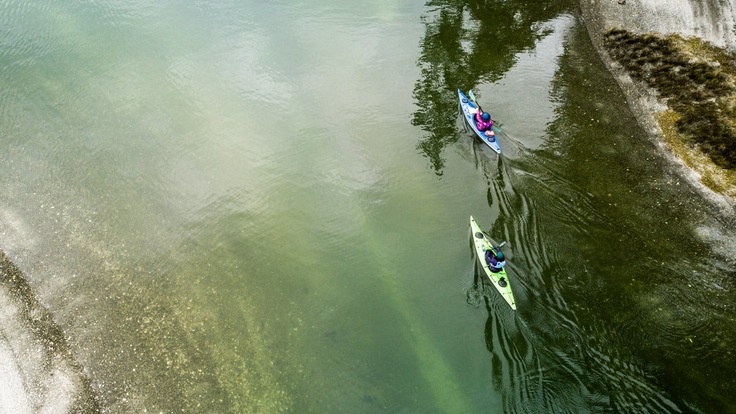Paddling off without taking some basic precautions is like hitting the trail without the Ten Essentials. Why tempt fate? If you'd like to enjoy many happy returns on your kayaking adventures, then follow these simple safety guidelines:
- Plan a trip within your capabilities
- Research local hazards and weather
- Create and share a float plan
- Bring essential safety gear
- Dress for immersion
- Don't go solo
Plan a Trip Within Your Capabilities
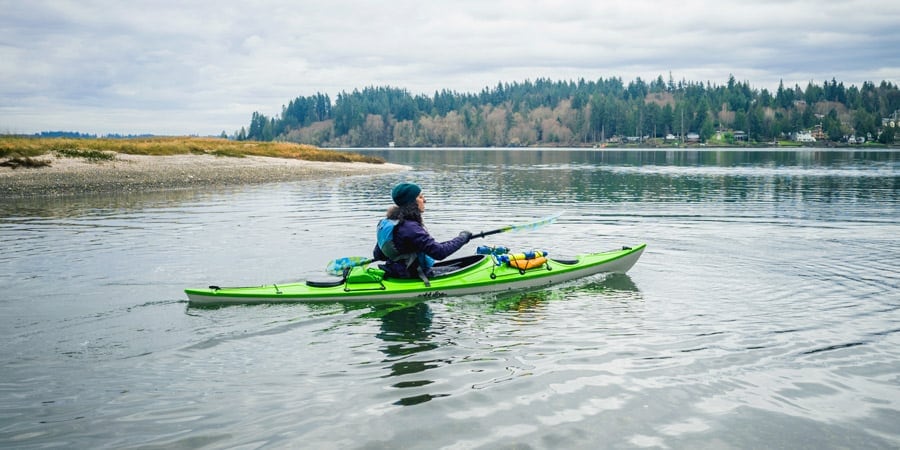
Put your skills to the test in a class, not on an unguided trip. You and your friends don't have to be experts, but everyone must be a strong enough paddler to handle the return distance with ease. For sit-in kayaks, everyone in the group must know how to do a wet exit and at least one person must know how to do a self rescue and T-rescue.
When you're a newer paddler, it's smart to minimize possible complications when you choose a destination. Look for these attributes as you plan:
- Calm, flat water: rapids and surf are for experts
- Small bodies of water: big ponds and little lakes
- Popular with other paddlers: They might be able to help if you get into trouble.
- Not popular with power boats: Better yet, go where they're prohibited.
- Destinations where you have a tailwind on the way home: That does mean, though, that you'll have a headwind on the way there.
- Routes that keep you close to shore: Shorelines are more interesting, anyway.
Bring Essential Safety Gear
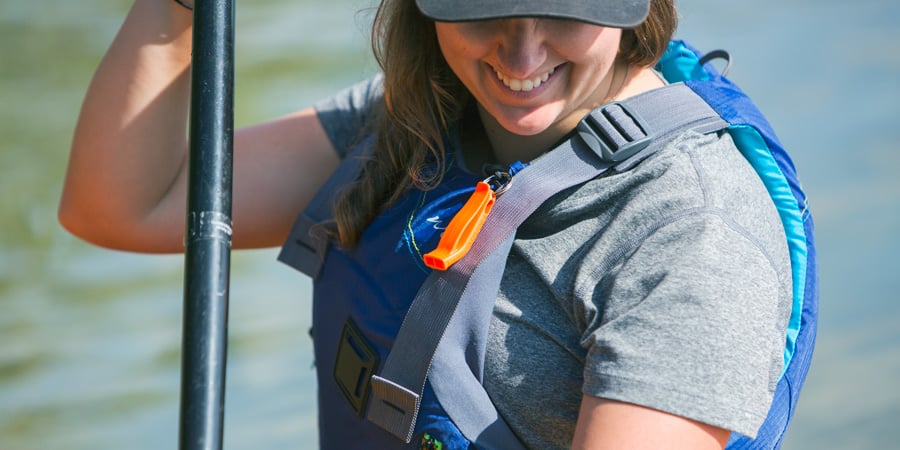
Be sure to try everything so you know how to use it all. Some of these items are simple to use, others are a little more complicated:
- PFD: Your personal flotation device should fit snugly and always be on—and there's never a kayak outing where you can forgo the PFD.
- Whistle: Attach it to your PFD. One blast is for attention; three blasts is "help." If you forget how many, just keep blasting away until a rescuer arrives.
- Communication Device: If you'll ever be out of whistle range of someone on shore, you need another way to call for help. If cell coverage is stellar everywhere, you can bring a cellphone in a waterproof case. Otherwise you need a VHF radio.
- Bilge Pump: Handy when your bottomside is in a puddle; vital if you capsize and have a boatful of H20 to purge.
- Spare Paddle: One per paddler is best, though a group can also share one or two spares.
- Paddle Float: This self-rescue gear requires training to use. (If the group's rescuer can't help you, you'll have to rescue yourself.)
- Towline: in case someone can't get to shore on their own.
- Headlamp: in case you're out longer than you anticipated.
The list above includes the minimum safety gear we recommend. For a more comprehensive list, plus other essentials, see our kayaking checklist.
Dress for Immersion
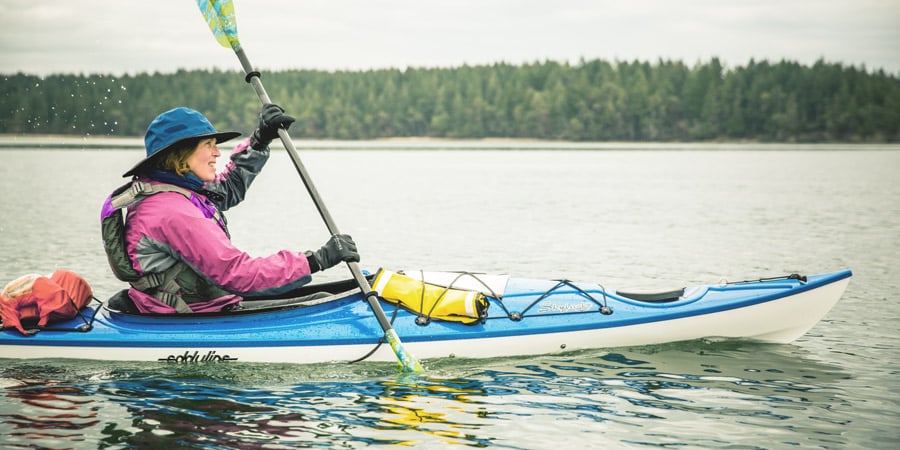
When you have water, water everywhere, it's important to take hypothermia seriously. So you need to know the water temperature and dress accordingly. According to the U.S. Coast Guard's safety recommendations, if the water where you're going will be below 70 degrees Fahrenheit, you need to wear a wetsuit or dry suit. For a full discussion, read What to Wear Kayaking.
Don't Go Solo
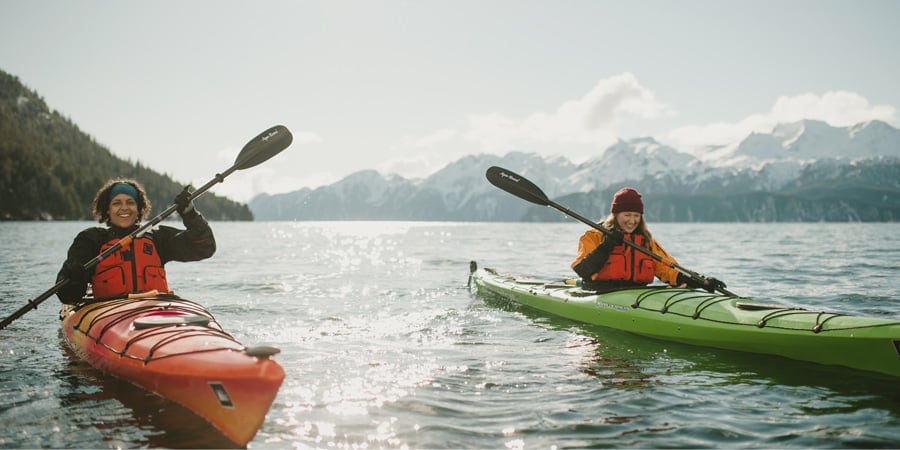
You can go it alone if you're an experienced kayaker, but you'll still be decreasing your margin for error if you take along a friend. A buddy rescue is faster than a self rescue and there's no such thing as a self tow if you're hurt. Besides, it's more fun to share the adventure.
Keep Your Group Close: It's not helpful to have buddies if the group stretches out into a series of solo paddlers. Everyone should be within earshot (or a whistle blast) of another paddler at all times.
Research Local Weather and Hazards
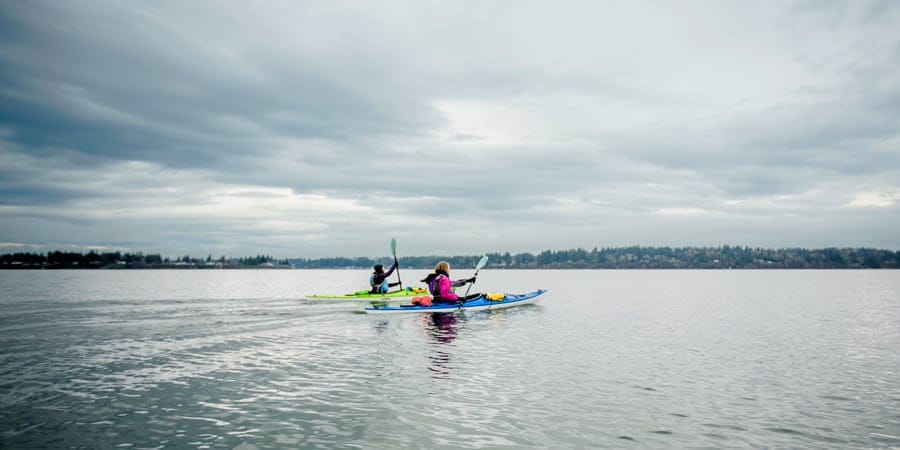
Local Weather: Check the forecast and updates as you paddle (use a phone app or a VHF radio's weather channel; or scan the horizon for storm clouds). If the forecast is iffy, go another day. If a storm moves in, cut the day short. If lightning rolls in, get off the water pronto.
Local Hazards: Gather some intel from a knowledgeable source. Does the wind always come up in the afternoon? Are there any tricky currents or unexpected swells or underwater hazards? Check with the government agency that patrols the water, or with local paddling shops and paddling clubs.
Avoiding Collisions: Big boats often can't see kayaks, so self-preservation dictates that you paddle like you never have the right of way. Here's a simple way to tell if you're on a collision course if you notice a boat coming toward you:
- Note the other vessel's position on a clock (your heading is 12 o'clock).
- Continually recheck the vessel's position to see if its clock position has changed.
- If not, you're on a collision or near-collision course: Turn your boat until the other vessel moves to another position on the clock face. You can also stop and let them pass.
- Technically, a vessel coming from behind is responsible for avoiding you. Keep a close eye on it, though, and make course corrections if it doesn't.
Create and Share a Float Plan
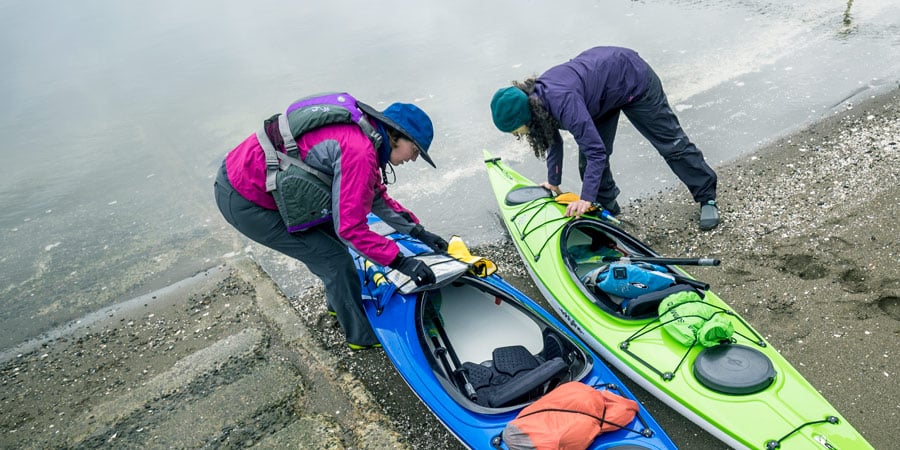
A float plan should contain critical details about your trip:
- Who? The names of everyone in the group, plus contact info for each.
- Where? Put-in and take-out locale(s); plus the planned route.
- When? Launch and return times, and when to notify the authorities if you're late.
- What? An action plan if you're out past that final deadline.
Leave your plan with the person who will miss you soonest. Your parents might care more, but a housemate might notice sooner that you're not back. Also leave copies of the plan in your vehicle and your kayak (in case your boat gets separated from you).
